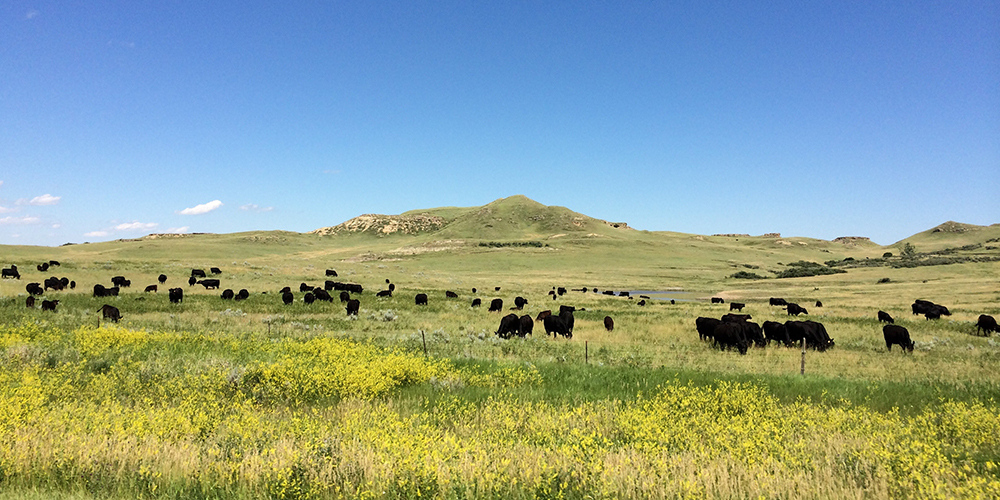Elevate Your Competence with Bagley Risk Management
Elevate Your Competence with Bagley Risk Management
Blog Article
Recognizing Livestock Threat Protection (LRP) Insurance Coverage: A Comprehensive Overview
Browsing the world of animals risk security (LRP) insurance coverage can be an intricate endeavor for numerous in the farming industry. From how LRP insurance policy works to the different insurance coverage alternatives available, there is much to uncover in this detailed overview that can possibly shape the method animals producers come close to risk monitoring in their companies.

Exactly How LRP Insurance Functions
Sometimes, recognizing the mechanics of Livestock Threat Defense (LRP) insurance can be complicated, but breaking down how it works can provide clarity for farmers and herdsmans. LRP insurance policy is a risk monitoring tool created to shield animals manufacturers against unanticipated rate declines. It's crucial to note that LRP insurance is not a revenue assurance; instead, it concentrates exclusively on cost danger defense.
Qualification and Protection Options

When it comes to coverage alternatives, LRP insurance policy offers producers the flexibility to choose the coverage degree, coverage duration, and endorsements that best fit their risk monitoring requirements. By recognizing the qualification requirements and coverage options readily available, livestock producers can make informed choices to handle danger successfully.
Pros and Disadvantages of LRP Insurance Policy
When reviewing Animals Risk Security (LRP) insurance policy, it is important for animals producers to evaluate the benefits and negative aspects inherent in this danger administration tool.

One of the key advantages of LRP insurance policy is its capability to supply defense versus a decline in livestock costs. This can help protect manufacturers from financial losses arising from market fluctuations. Furthermore, LRP insurance coverage provides a level of versatility, enabling manufacturers to tailor insurance coverage levels and plan durations to suit their specific requirements. By securing an assured cost for their animals, manufacturers can better manage danger and strategy for the future.
One constraint of LRP insurance coverage is that it does not shield versus all types of threats, such as condition break outs or all-natural catastrophes. It is essential for producers to carefully evaluate their private danger direct exposure and financial scenario to determine if LRP insurance coverage is the appropriate danger management tool for their procedure.
Comprehending LRP Insurance Policy Premiums
.png)
Tips for Making Best Use Of LRP Advantages
Making best use of the advantages of Livestock Danger Protection (LRP) insurance requires strategic preparation and positive risk management - Bagley Risk Management. To maximize your LRP coverage, consider the adhering to ideas:
Consistently Analyze Market Problems: Remain educated regarding market trends and price variations in the livestock market. By checking these factors, you can make informed decisions regarding when to buy LRP protection to secure versus prospective losses.
Establish Realistic Insurance Coverage Levels: When picking coverage degrees, consider your production costs, market worth of livestock, and potential risks - Bagley Risk Management. Establishing practical protection levels guarantees that you are properly secured without overpaying for unneeded insurance coverage
Expand Your Protection: As opposed to relying only on LRP insurance, think about diversifying your threat administration approaches. Integrating LRP with other threat monitoring devices such as futures contracts or alternatives can offer extensive coverage versus market uncertainties.
Evaluation and Change Protection Consistently: As market additional reading conditions change, regularly examine your LRP coverage to ensure it aligns with your existing risk direct exposure. Adjusting coverage levels and timing of acquisitions can aid maximize your risk security technique. By complying with these ideas, you can optimize the benefits of LRP insurance policy and protect your animals procedure against unforeseen dangers.
Verdict
In final thought, animals threat protection (LRP) insurance policy is a valuable tool for farmers to manage the financial dangers related to their animals procedures. By understanding exactly how LRP works, eligibility and insurance coverage options, as well as the pros and disadvantages of this insurance, farmers can make educated decisions to shield their incomes. By very carefully thinking about LRP premiums and implementing approaches to make the most of advantages, farmers can reduce prospective losses and guarantee the sustainability of their operations.
Animals producers interested in acquiring Animals Risk Security (LRP) insurance policy can explore a variety of qualification criteria and coverage choices customized to their certain animals procedures.When it comes to coverage choices, LRP insurance coverage check out here provides manufacturers the adaptability to choose the insurance coverage degree, coverage period, and recommendations that ideal suit their risk administration needs.To grasp the complexities of Animals Threat Defense (LRP) insurance coverage fully, understanding the factors affecting LRP insurance coverage premiums is important. LRP insurance coverage costs are established by various components, including the coverage degree chosen, the anticipated cost of animals at the end of the insurance coverage duration, the type of livestock being insured, and the size of the insurance coverage duration.Review and Change Insurance Coverage On a regular basis: As market conditions alter, occasionally examine your LRP insurance coverage to ensure it straightens with your current danger exposure.
Report this page